It’s possible that I shall make an ass of myself. But in that case one can always get out of it with a little dialectic. I have, of course, so worded my proposition as to be right either way (K.Marx, Letter to F.Engels on the Indian Mutiny)
Wednesday, July 07, 2021
The Brazilian protest leader determined to bring Bolsonaro’s ‘genocidal’ government down - video
The Guardian follows Guilherme Boulos, who ran against Bolsonaro in the last elections, as he leads thousands through the streets of São Paulo, calling for the country’s president to be impeached.
The pressure is mounting on Bolsonaro as he faces a scandal over allegedly corrupt Covid vaccine deals and public rage over his handling of a pandemic that has killed more than half a million people.
Boulos has helped lead and organise two mass demonstrations already in the past month and will be at the forefront of a third protest this Saturday. Tens of thousands of people are expected to turn out.
Pressure mounts on Bolsonaro amid rising anger over vaccine corruption scandal
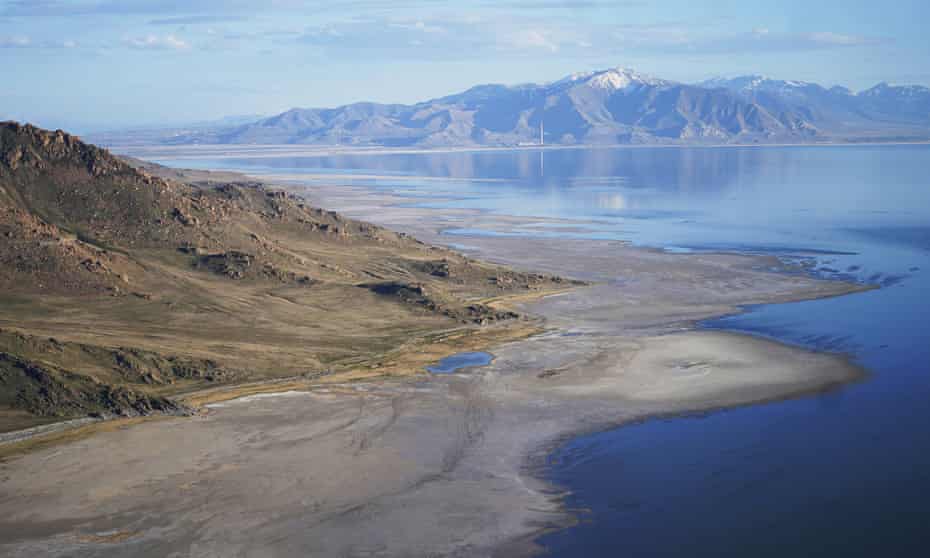
The receding water is affecting wildlife and could send arsenic-laced dust into the air that millions breathe
Associated Press
Tue 6 Jul 2021
The silvery blue waters of the Great Salt Lake sprawl across the Utah desert, having covered an area nearly the size of Delaware for much of history. For years, though, the largest natural lake west of the Mississippi River has been shrinking. And a drought gripping the American west could make this year the worst yet.
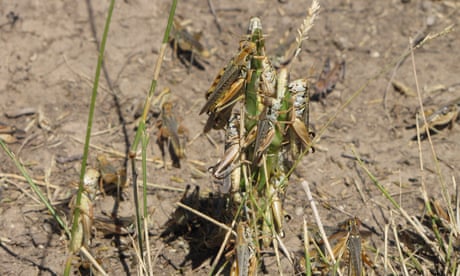
‘A scourge of the Earth’: grasshopper swarms overwhelm US west
The receding water is already affecting the nesting spot of pelicans that are among the millions of birds dependent on the lake. Sailboats have been hoisted out of the water to keep them from getting stuck in the mud. More dry lakebed getting exposed could send arsenic-laced dust into the air that millions breathe.
“A lot us have been talking about the lake as flatlining,” said Lynn de Freitas, the executive director of Friends of the Great Salt Lake.
The lake’s levels are expected to hit a 170-year low this year. It comes as the drought has the US west bracing for a brutal wildfire season and coping with already low reservoirs. The Utah governor, Republican Spencer Cox, has begged people to cut back on lawn watering and “pray for rain”.
For the Great Salt Lake, though, it is only the latest challenge. People for years have been diverting water from rivers that flow into the lake to water crops and supply homes. Because the lake is shallow, about 35ft (11 meters) at its deepest point, less water quickly translates to receding shorelines.
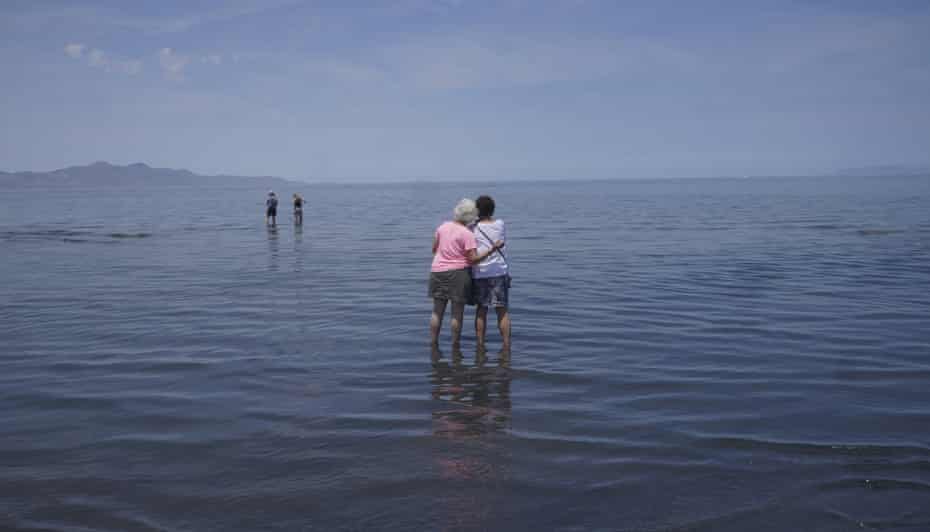
The water that remains stretches across a chunk of northern Utah, with highways on one end and remote land on the other. A resort, long since closed, once drew sunbathers who would float like corks in the extra salty waters. Picnic tables once a quick stroll from the shore are now a 10-minute walk away
Robert Atkinson, 91, remembers that resort and the feeling of weightlessness in the water. When he returned this year to fly over the lake in a motorized paraglider, he found it changed.
“It’s much shallower than I would have expected it to be,” he said.
The waves have been replaced by dry, gravelly lakebed that’s grown to 750 sq miles (1,942 sq km). Winds can whip up dust from the dry lakebed that is laced with naturally occurring arsenic, said Kevin Perry, a University of Utah atmospheric scientist.
It blows through a region that already has some of the dirtiest wintertime air in the country because of seasonal geographic conditions that trap pollution between the mountains.
Perry warns of what happened at California’s Owens Lake, which was pumped dry to feed thirsty Los Angeles and created a dust bowl that cost millions of dollars to tamp down. The Great Salt Lake is much larger and closer to a populated area, Perry said.
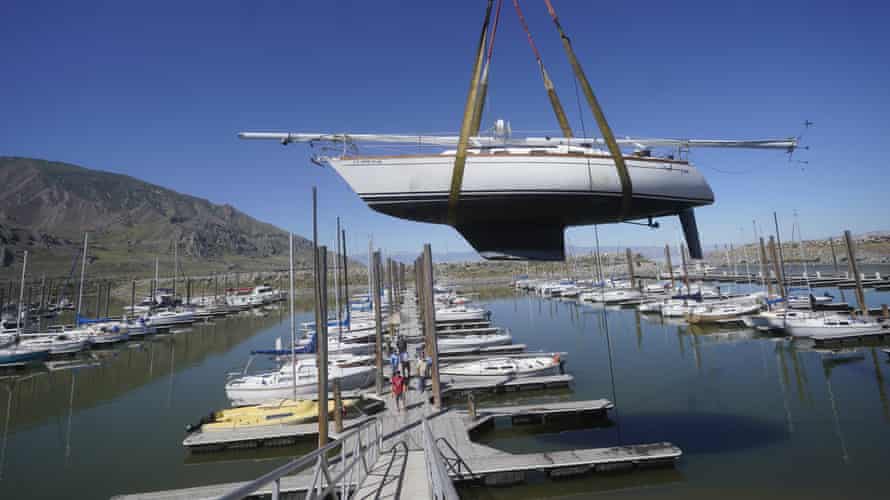
Luckily, much of the bed of Utah’s giant lake has a crust that makes it tougher for dust to blow. Perry is researching how long the protective crust will last and how dangerous the soil’s arsenic may be to people.
This year is primed to be especially bleak. Utah is one of the driest states in the country, and most of its water comes from snowfall. The snowpack was below normal last winter and the soil was dry, meaning much of the melted snow that flowed down the mountains soaked into the ground.
Most years, the Great Salt Lake gains up to 2ft (half a meter) from spring runoff. This year, it was just 6in (15cm), Perry said. “We’ve never had an April lake level that was as low as it was this year,” he said.
More exposed lakebed also means more people have ventured on to the crust, including off-road vehicles that damage it, Laura Vernon, the Great Salt Lake coordinator, said.
“The more continued drought we have, the more of the salt crust will be weathered and more dust will become airborne because there’s less of that protective crust layer,” she said.
The swirling dust also could speed the melting of Utah’s snow, according to research by McKenzie Skiles, a snow hydrologist at the University of Utah. Her study showed that dust from one storm made the snow so much darker that it melted a week earlier than expected. While much of that dust came from other sources, an expansion of dry lakebed raises concerns about changes to the state’s billon-dollar ski industry. “No one wants to ski dirty snow,” she said.

While the lake’s vast waters are too salty for most creatures except brine shrimp, for sailors like Marilyn Ross, 65, it’s a tranquil paradise with panoramas of distant peaks. “You get out on this lake and it’s better than going to a psychiatrist, it’s really very calming,” she said.
But this year, the little red boat named Promiscuous that she and her husband have sailed for more than 20 years was hoisted out of the water with a massive crane just as the season got under way. Record-low lake levels were expected to leave the boats stuck in the mud rather than skimming the waves. Low water has kept the other main marina closed for years.
“Some people don’t think that we’re ever going to be able to get back in,“ Ross said.
Brine shrimp support a $57m fish food industry in Utah but in the coming years, less water could make the salinity too great for even those tiny creatures to survive.
“We’re really coming to a critical time for the Great Salt Lake,” said Jaimi Butler, the coordinator for Great Salt Lake Institute at Westminster College in Salt Lake City. She studies the American white pelican, one of the largest birds in North America.
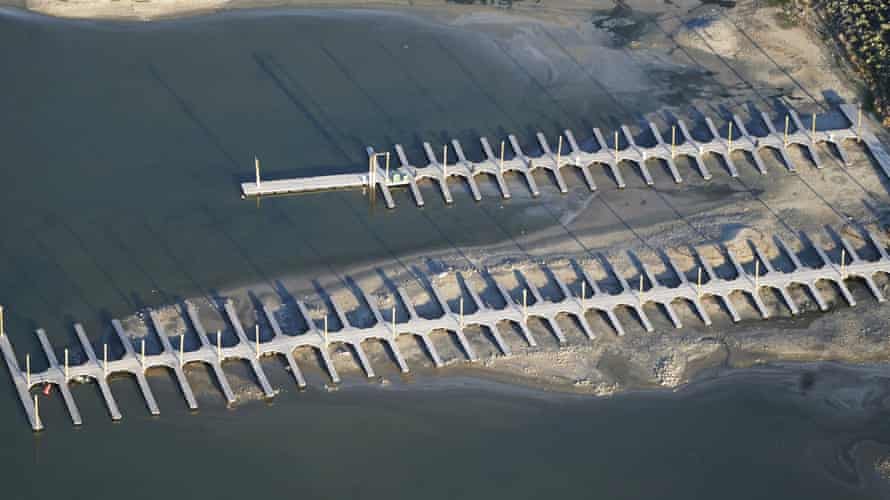
They flock to Gunnison Island, a remote outpost in the lake where up to 20% of the bird’s population nests, with male and female birds cooperating to have one watch the eggs at all times.
“Mom goes fishing and dad stays at the nest,” Butler said.
But the falling lake levels have exposed a land bridge to the island, allowing foxes and coyotes to come across and hunt for rodents and other food. The activity frightens the shy birds accustomed to a quiet place to raise their young, so they flee the nests, leaving the eggs and baby birds to be eaten by gulls.
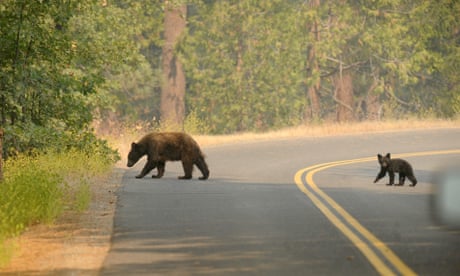
Rattlesnakes everywhere: the odd consequences of California’s drought
Pelicans aren’t the only birds dependent on the lake. It’s a stopover for many species to feed on their journey south.
A study from Utah State University says that to maintain lake levels, diverting water from rivers that flow into it would have to decrease by 30%. But for the state with the nation’s fastest-growing population, addressing the problem will require a major shift in how water is allocated and perceptions of the lake, which has a strong odor in some places caused treated wastewater and is home to billions of brine flies.
“There’s a lot of people who believe that every drop that goes into the Great Salt Lake is wasted,” Perry said. “That’s the perspective I’m trying to change. The lake has needs, too. And they’re not being met.”
Nordic countries endure heatwave as Lapland records hottest day since 1914
Kevo in Lapland recorded a temperature of 33.6C after Finland registered record heat in June
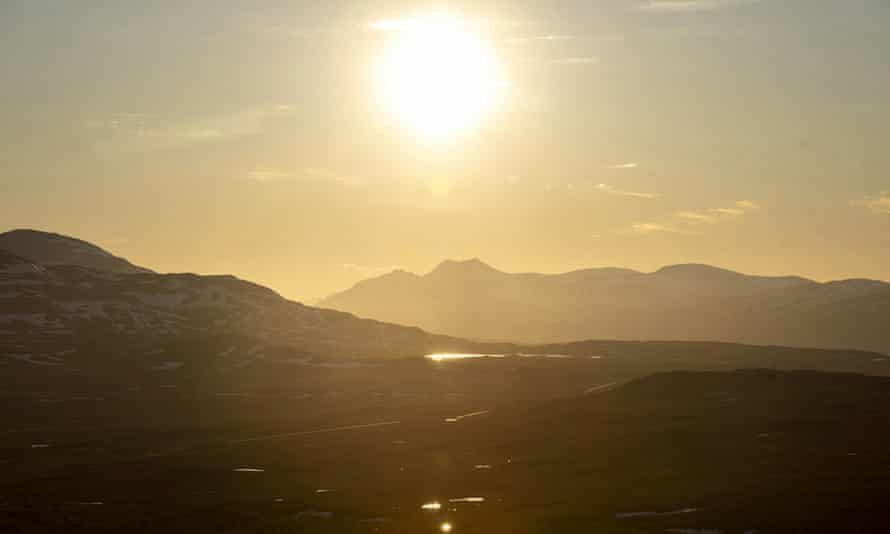
Lisa Cox and agencies
Tue 6 Jul 2021
Nordic countries have registered near-record temperatures over the weekend, including highs of 34C (93.2F) in some places.
The latest figures came after Finland’s national meteorological institute registered its hottest temperature for June since records began in 1844.
Kevo, in Lapland, recorded heat of 33.6C (92.5F) on Sunday, the hottest day since 1914 when authorities registered 34.7C (94.5F), said the STT news agency. Several parts of Sweden also reported record highs for June.
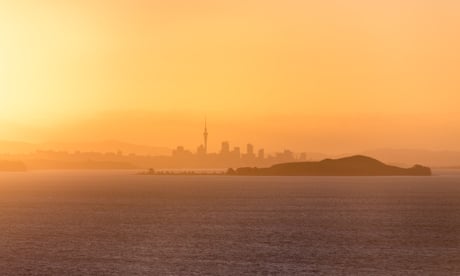
New Zealand experiences hottest June on record despite polar blast
Read more
The high temperatures follow the record-breaking heatwave and wildfires that have caused devastation in parts of North America.
The intense heatwave has killed 95 people in the US state of Oregon alone, its governor said on Sunday. Hundreds are believed to have died from the heat in the US north-west and south-western Canada.
Experts and officials fear that the catastrophic conditions, fuelled by the climate crisis, will only get worse through the coming months.
Michael Reeder, a professor of meteorology in the school of Earth, atmosphere and environment at Australia’s Monash University, said the events on the European and North American continents were linked.
Reeder has written about the meteorological conditions that allowed for the North American heatwave to form. He said a tropical low in the western Pacific, near Japan, had disturbed the atmosphere, creating ripples around the hemisphere as what is known as a Rossby wave.
That wave broke off the west of Canada, triggering the conditions for the heatwave.
“It’s like plucking a guitar string. The disturbance propagated along the jet stream,” Reeder said.
“It gets to North America, it (amplified) and produced a big high pressure system in the middle part of the atmosphere.”
He said that had then kicked off another wave over the north Atlantic that then broke and produced the conditions for high temperatures in the Nordic regions.
“So from that perspective, the high temperatures over Scandinavia are directly linked to what happened in North America.”
At a national level, June 2021 was the third-hottest ever recorded in Sweden.
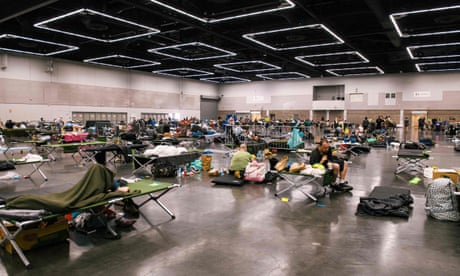
Nowhere is safe, say scientists as extreme heat causes chaos in US and Canada
And Norway’s meteorological institute registered 34C (93.2F) in Saltdal, a county near the Polar Circle. That is the highest temperature measured in the country this year, and just 1.6C (2.9F) short of Norway’s all-time record.
Canada is battling a string of forest fires in the western province of British Columbia after sweltering under temperatures of up to 49.6C (121.3F), a new national record.
Several parts of the world have already experienced crushing heatwaves this year.
In the southern hemisphere, June was also the hottest on record in New Zealand, where it is a winter month. On Thursday, the United Nations confirmed a new record high temperature for the Antarctic continent – measured last year – of 18.3C (64.9F).
This article was amended on 6 July 2021. An earlier version wrongly stated that a temperature difference of 1.6C equated to 34.9F.
Younger people have been more aware of the risks compared with older groups, but over the past decade that has changed
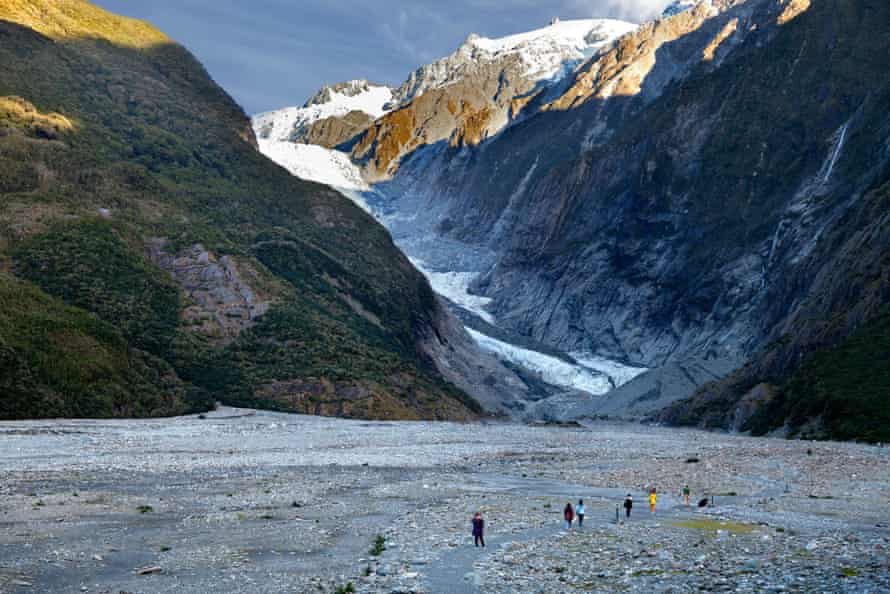
Eva Corlett in Waikanae
Tue 6 Jul 2021
On his early morning bike rides to school, David Yockney would deliberately seek out the crunch and splash of the ice-hardened puddles. It was a winter joy he loved, and one he took for granted. Now, 60 years later, he is surprised when ice forms a thin crust in the bird bath at his home on the Kāpiti coast, north of Wellington.
The 74-year-old climate activist has become increasingly disturbed by the changes to his environment wrought by global heating and he is not the only one. New research from the University of Waikato shows that younger and older New Zealanders are becoming concerned about the climate emergency.
As part of the New Zealand Attitudes and Values Survey, the 10 year study asked 56,000 citizens across different age groups two main questions – whether they believe climate change is real, and whether they believe it is caused by humans.

New Zealand experiences hottest June on record despite polar blast
The data shows that from the outset, younger people had more awareness of the risks of climate change compared with older groups. But in the past 10 years, that awareness is increasing at a comparable rate between both young and old, and now more than ever, New Zealanders believe climate change is real and caused by humans.
Understanding the risks of the climate emergency came slowly to Yockney.
The former teacher and video producer remembers hearing early discussions about the climate in the 1990s. His first ethical reckoning came when a scientist from a coal company approached him to make an advertisement “extolling the joys of coal”. At that stage, he did not have a strict set of values on the issue and the “merchants of doubt” – the coal company – were convincing in their rhetoric. He abandoned the project but it would be another 25 years before Yockney would become convinced climate change is real and caused by human activity.
In his retirement, he began reading extensively on the topic and with that came a chance to reflect both on the changes he needed to make personally, and the changes he wanted to see societally.
“You have to make changes. You can’t sit on the sideline. I’m not an angel – I would like to fly around the world and do whatever retired people do – but we do limit ourselves.”
That includes riding his bicycle for short journeys, cutting back on meat and limiting his gas heater use, even in winter
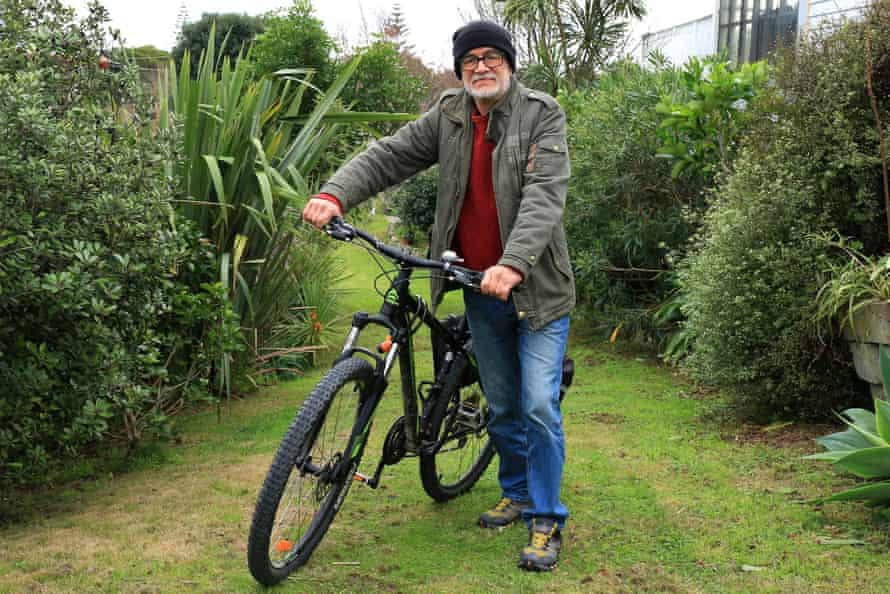
But for Yockney, making personal changes was “essential but not sufficient”. He joined Low Carbon Kāpiti, a grassroots advocacy group that lobbies the local council on climate change. The group’s petition to urge the Kāpiti District Coast Council into becoming carbon neutral by 2050 helped clinch the council’s commitment to that target.
Ultimately, Yockney wants to leave behind a healthy world for his grandchildren.
“Our legacy will be a burning-up world and that’s not something I’m particularly proud of.
“They talk about a death by a thousand cuts, that’s what we’ve been doing. Now we need life by a million cuts – cuts to carbon emissions.”
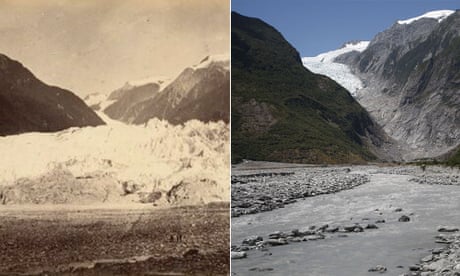
End of the ice: New Zealand’s vanishing glaciers
Nearly 30% of the population on the Kāpiti coast is over 65, compared with roughly 15% for the whole of New Zealand. Former Kāpiti coast mayor and now chair of the Kāpiti Coast Climate Action Group, Jenny Rowan, said a growing number of older people in the region are rolling up their sleeves to get involved.
The group is made up of predominantly over-60s, many of whom were once policymakers in nearby Wellington.
‘I’m a baby boomer, we’re part of the problem’
Rowan, 71, became interested in the environment early on, but from a different angle. Her interest in rural politics led her to take on roles on various local boards and communities. After then spending 16 years working as a commissioner in the environmental court, she became the district mayor for the Kāpiti coast for two terms.
Rowan had an existing understanding of environmental problems, but after attending a 2019 conference in Scotland about climate change and consciousness, she knew she needed to move to direct action.
“I came home to a group of people who had got very fired up. They were ready and willing to work with the local council to see how much influence we could have in bringing the climate change issues, that relate to our part of New Zealand, into our policies.”
Rowan has noticed a substantial shift in attitudes from the local community towards people speaking out publicly about climate change.
“We’re not perceived as nutters any more, which is significant, particularly here in Kāpiti.
“I am a baby boomer. We are part of the problem. Now we need to become part of the solution and I’m seeing that happen here.”
Rowan said she hopes the collective effort will mean climate change is considered by central and local governments in every decision they make.
Dr Taciano Milfont, the lead author of the University of Waikato study, was inspired to look at intergenerational attitudes to climate change after witnessing the 2019 school strikes.

Although all age groups have become more concerned about climate change, a divide still exists between the number of people who believe it is real, and those who believe it is caused by human activity. Fewer people overall believe the latter.
“In psychology we talk about the theory of responsibility. If we believe we are not causing it, then we will keep doing what we are doing. The discourse of that would be around inaction,” Milfont said.
He speculated that the growing understanding of climate change overall, however, could be attributed to better science and climate communication.
There has also been a positive cultural shift, he said.
“Not long ago, in the political discourse in New Zealand, the reality of climate change was the point of discussion. But now across all the political parties, before the last election, no party denied climate change.”
Milfont hopes the research will prove to policymakers that climate change is an issue New Zealanders care about deeply, and that in turn will generate urgent action at the top level.

IMAGES STAFF
DESK REPORT
Usman Mirza may have been arrested but people are still highlighting how unsafe women are in this country.
The hashtag #ArrestUsmanMirza has been trending since Tuesday night, when graphic videos of the stripping, sexual assault and torture of a woman and man began circulating on social media. Usman Mirza has since been arrested by the Islamabad police but social media isn't appeased.
The FIR, which was registered on Tuesday — presumably after the video began circulating on social media — says the assault took place within the Golra police station limits at an apartment building in sector E-11/2. The case was registered on the complaint of a sub-inspector.
"The video of the incident went viral on social media. In the video, five to six men can be seen keeping the victims in custody under gunpoint. The accused also stripped the couple naked while threatening them," the FIR said, adding that the suspects were also doing "vulgar acts".
The case was registered under Section 354-A (assaulting and stripping woman of her clothes), Section 506 (criminal intimidation), Section 341 (punishment for wrongful restraint) and Section 509 (sexual harassment) of the Pakistan Penal Code.
Social media initially trending the #ArrestUsmanMirza hashtag to have Mirza, the main suspect, arrested. But after his arrest, the hashtag continued to be used to highlight the situation.
You blame women for being raped because of their clothes, reject bills that will punish domestic abusers and now men go around raping girls and make videos of it, wrote comedian and rapper Ali Gul Pir. "It's time for a change," he wrote, tagging Prime Minister Imran Khan. His sentiment was widely shared on social media as people have been bringing up the premier's recent comments linking rape and women's clothes. "If a woman is wearing very few clothes it will have an impact, it will have an impact on the men, unless they’re robots. I mean it’s common sense," he had said.
Among other messages on social media were frequent appeals for people to stop sharing the video as it showed the victims' faces.
However, many people noted that it takes a graphic video of violence for action to be taken in this country.
According to Islamabad Deputy Commissioner Hamza Shafqaat, the video is a few months old. Action was taken by the police after the video began circulating on social media.
"We live in a country where ... abusers can get away with crimes because they are backed by a state that always tells them it was the woman’s fault," wrote one user, criticising the lack of government support for victims.
Another believed this was part of a greater issue where petty tyrants are able to commit crimes with impunity. "Change must begin now," they wrote.
Internet celebrity Nasir Khan Jan knew this is part of a never-ending cycle.
"Let me tell you what's going to happen after this incident," he wrote. "The police will release Usman Mirza, ministers will tweet one after the other, #ArrestUsmanMirza will trend for another two days on Twitter and then we'll forget until the next rape," he said. His commentary is spot on because, unfortunately, this is the same thing that happens every time an incident like this is reported in Pakistan.
One user demanded we make an example of Mirza, but how many examples do we need?
This user had something to say about how scary it is to be a woman and yet be blamed for crimes against you.
Another raised a harrowing point about the videos that haven't gone viral on social media. Though they're talking about Mirza in particular, this applies to thousands of cases across the country.
Many of the post on social media were from women who are terrified after hearing of and in some cases seeing this assault.
Where are women supposed to be safe? Not on the streets, not in schools or universities and not in our homes. This horrifying incident just reminds us that there are very if any spaces where women are safe. Until we take concrete action to ensure the safety of women in this country, incidents like this will remain Twitter trends that, as Nasir Khan Jan said, die out after a day or two.
We have one thing to ask of you — stop sharing the video but don't stop being outraged. Be angry at this incident and others like it and use your anger to fight for safer spaces for women in this country.
Islamabad police arrest man for torturing, stripping woman naked
Shakeel QararPublished July 7, 2021

A man has been arrested in Islamabad after a harrowing video of him torturing and stripping a couple went viral on social media, it emerged on Wednesday. — Photo provided by author
Police arrested a suspect in Islamabad after a harrowing video of him torturing and stripping a woman and a man went viral on social media, it emerged on Wednesday.
According to the FIR registered on July 6, a copy of which is available with Dawn.com, the incident took place within Golra police station limits at an apartment building in sector E-11/2. The case was registered on the complaint of a sub-inspector.
"The video of the incident went viral on social media. In the video, five to six men can be seen keeping the victims in custody under gunpoint. The accused also stripped the man and the woman naked while threatening them," the FIR said, adding that the suspects were also doing "vulgar acts".
The case was registered under Section 354-A (assaulting and stripping a woman of her clothes), Section 506 (criminal intimidation), Section 341 (punishment for wrongful restraint) and Section 509 (sexual harassment) of the Pakistan Penal Code.
"The video of violence against a woman and a man went viral on social media. Islamabad police immediately utilised all resources to arrest the accused in a few hours, registered an FIR and initiated legal action," Islamabad police said on Twitter.
Islamabad Deputy Commissioner Hamza Shafqaat said that the culprit had been arrested after police efforts. "His accomplices are also being arrested. It is once again requested to please delete the videos which show the victims," he said.
Hours later, the deputy commissioner said that all the suspects had been arrested. The incident, which was highlighted on social media, quickly became the top trend in the country with netizens calling for strict punishment for the main accused, identified as Usman Mirza.
"Monsters like Usman Mirza are product of a culture in which they know they can commit horrific violence with impunity. Unfortunately, women face the brunt of our system's brutality," said activist Ammar Ali Jan.
Journalist Najia Ashar said just arresting the culprit was not enough. "Make an example out of this monster," she wrote.
PPP leader Naz Baloch said that instant justice and speedy trial of heinous offences is the only solution to root out violence against women.

SINGAPORE: Singapore researchers have developed a smart foam material that allows robots to sense nearby objects, and repairs itself when damaged, just like human skin.
Artificially innervated foam, or AiFoam, is a highly elastic polymer created by mixing fluoropolymer with a compound that lowers surface tension.
This allows the spongy material to fuse easily into one piece when cut, according to the researchers at the National University of Singapore.
“There are many applications for such a material, especially in robotics and prosthetic devices, where robots need to be a lot more intelligent when working around humans,” explained lead researcher Benjamin Tee.
To replicate the human sense of touch, the researchers infused the material with microscopic metal particles and added tiny electrodes underneath the surface of the foam.
When pressure is applied, the metal particles draw closer within the polymer matrix, changing their electrical properties. These changes can be detected by the electrodes connected to a computer, which then tells the robot what to do, Tee said.
“When I move my finger near the sensor, you can see the sensor is measuring the changes of my electrical field and responds accordingly to my touch,” he said.
This feature enables the robotic hand to detect not only the amount but also the direction of applied force, potentially making robots more intelligent and interactive.
Tee said AiFoam is the first of its kind to combine both self-healing properties and proximity and pressure sensing. After spending over two years developing it, he and his team hope the material can be put to practical use within five years.
“It can also allow prosthetic users to have more intuitive use of their robotic arms when grabbing objects,” he said.
Published in Dawn, July 7th, 2021

The Punjab government will establish separate schools for the transgender community in selected cities of the province and the first of its kind will be established in Multan very soon, Education Minister Dr Murad Raas announced on Tuesday.
Addressing a ceremony of the Insaf Afternoon School Programme in Lahore, the minister said that the government had decided not to enroll transgender persons in regular schools due to reservations regarding the behaviour of other students.
He added that the attitude of students of regular schools could be insulting towards the transgender community, which is why separate schools would be established for them.
He claimed that it was unfortunate that no government, except for the Pakistan Tehreek-i-Insaf, had thought about the welfare and provision of education and jobs to the community.
Appreciating the efforts of the education chief executive officers and the teachers for a successful enrollment drive across the province, the minister expressed the hope that a large number of out-of-school children would be enrolled in schools.
He said that selected schools under the IASP would be upgraded according to the needs before starting classes, adding that the registration of such schools was in progress and would be completed till July 15.
In response to a question, he said that only a small number of private schools were open for summer classes to cover the syllabus, adding that from August 1, all government institutions would also be reopened.
He urged parents and school heads to ensure implementation of Covid-19 standard operating procedures (SOPs) in schools.
Dr Raas also termed the implementation of Single National Curriculum from August 1, 2021 a historic step towards improvement of education standards.
He said that keeping in view the importance of teacher training, the government had arranged trainings under Microsoft certification for improving the capacity of Punjab teachers.
AP

Top Biden administration officials on Tuesday hosted a brother to Saudi Arabia’s powerful crown prince, Mohammed bin Salman, in the highest-level such visit known since the United States made public intelligence findings linking the crown prince to the killing of journalist Jamal Khashoggi.
The Biden administration did not publicly disclose the visit by Prince Khalid bin Salman, Saudi Arabia’s deputy defence minister, in advance. President Joe Biden had pledged to make a “pariah” of the kingdom’s crown prince during his presidential campaign over Khashoggi’s killing and other abuses, but his administration has instead emphasised US strategic interests with Saudi Arabia.
At a briefing with reporters on Tuesday, White House press secretary Jen Psaki confirmed the meetings were underway and indicated that officials may raise the killing.
Khalid bin Salman met briefly at the Pentagon with Defence Secretary Lloyd Austin and Gen Mark Milley, chairman of the Joint Chiefs of Staff, one official said, speaking on condition of anonymity to discuss a meeting that was not yet made public. The Saudi prince had longer talks at the Pentagon with Colin Kahl, undersecretary of defence for policy, the official said.
Khalid bin Salman also was due to talk with National Security Adviser Jake Sullivan and, at the State Department, Undersecretary Victoria Nuland and counselor Derek Chollet, two other US officials said, also speaking on condition of anonymity because they were not authorised to speak about the visit.
Americans and the prince were expected to discuss matters including the war in Yemen, military contracts and Saudi concerns over US efforts to return to a nuclear agreement with Iran, Saudi Arabia’s rival.
A State Department spokesperson, speaking on condition of anonymity because they were not authorised to discuss the matter publicly, said the administration has made clear that it found Khashoggi’s killing unacceptable. The spokesperson said the US would continue raising human rights concerns at the highest level.
The Saudi government had no immediate public comment on the visit.
Khashoggi, a columnist for the Washington Post who had written critically of Mohammed bin Salman, was killed by Saudi officials in October 2018 at the Saudi consulate in Istanbul. Khashoggi, who was based in the Washington, DC area, had gone to the consulate to get documentation for his upcoming wedding.
The Biden administration in February released a declassified intelligence report concluding that Mohammed bin Salman, powerful son of the aging King Salman, had authorised the team of Saudi security and intelligence officials that killed Khashoggi.
State Department spokespeople did not respond to a question on Tuesday about why they had not announced the Saudi official’s visit in advance.
They also did not answer whether the Biden administration had concluded Khalid bin Salman played no role in the Saudi organisation behind Khashoggi’s killing, or had decided instead that US interests required Biden officials to meet with senior Saudi royals despite the administration’s public condemnation of the killing.
As the crown prince’s younger brother, Prince Khalid was the kingdom’s ambassador in Washington at the time, but he was recalled soon after Khashoggi’s killing amid bipartisan US outrage. When Khashoggi vanished after going to the Saudi consulate in Turkey, Khalid bin Salman insisted for days that accusations of official Saudi involvement in his disappearance were groundless.
The Washington Post reported that Khalid bin Salman had told Khashoggi to go to the consulate in Turkey to pick up the needed wedding papers, and told him it would be safe to do so.
Iftikhar A. Khan

ISLAMABAD: PPP vice president Senator Sherry Rehman on Tuesday warned that the situation in Afghanistan could badly affect Pakistan.
Talking to reporters on the rapidly evolving situation in Afghanistan, she noted that Pakistan had the highest stakes in Afghan peace, but the geopolitics of escalating violence next door indicated that peace might be much further than imagined.
She said that in this scenario clear and focused policymaking at home would have far-reaching benefits for security and economic stability of the country.
“Clarity and consensus are needed for any foreign policy to be successful, especially if policy agendas are focused on protecting a country’s interests and people, which involves managing competing interests and ideas,” she said.
“In times of crisis, leadership is crucial to policy formation as well as its smart articulation,” she said.
“Unfortunately, at key inflection points for the country, the prime minister, who should have the convening power and accompanying goodwill to ensure unity and consensus via political parties and parliaments, is absent. “It’s as if he feels he can outsource vital decisions that will test Pakistan, to other cabinet members and the security community, who should not have to go it alone when trying to chart a way forward for the country in the institutional vacuum he has created in Pakistan.
“In war or peace, a country needs a leader who can speak with moderation and intellectual integrity with parliament in order to manage crisis or create new paths for development. Pakistan seems rudderless at the moment, with the PM only using his office to swing from one extreme position to another,” the PPP leader said.
Asked what the PPP would have done had it been in power, she said: “We would have to reinvent no wheel. We already have a framework in place through which the National Security Committee of both houses of parliament came into being as a result of consensus resolution to defeat extremism and terrorism in 2008. This resolution was framed as an outcome of a joint session of parliament which took place after a series of bombings, including the attack on Hotel Marriot, and this very resolution authorised the National Security Committee of parliament to continue meetings, briefings, deliberations and decision-making which reflected the shared stakes of parliament, which represents all of Pakistan.
“When confronted with a difficult policy choice, for instance what to do with existing American bases leased out covertly in 2001, this committee was able to draft a joint agreement for Pakistan to go forward with closing bases, but opening the Ground Lines of Communications for Nato forces bringing equipment and arms out of Afghanistan, not allowing anyone into the country via Pakistan’s air or ground space. Because we were able to use our government’s convening power and across-the-aisle goodwill in parliament, with all key ministries and [then]president (Asif Ali) Zardari and PM (Yousuf Raza) Gilani playing key roles in tandem with other offices, the agreements were publicly acceptable in Pakistan; they were also accepted by the US and Nato entities as consensus agreements. Pakistan was able to not only launch anti-militancy operations in 2009 via the mandate of the Parliament Resolution of 2008, but also virtually eliminate Al Qaeda from its border regions by 2013, and come out of this tough period of sacrifice and national trauma by the ability of its leadership to work together and to carry parliament and people with them.”
Ms Rehman said foreign policy could not be predicated on mood-swing statements, or personal likes or dislikes of any individual. “It is pure statecraft which must reflect the institutional expression of state interests as well as the political will of the people of Pakistan. Big decisions need big leaders who can sublimate their ego to public interests and institutional tradecraft, not just reach out to mass media via tweets and TV addresses. As Pakistan faces one of the worst emerging regional situations in decades, the first test of its foreign policy is to not lock itself into policy straitjackets, but to be able to navigate a fine balance between friends and frenemies.
“There is a tightening of the international community circle around Pakistan with reference to FATF, GSP-plus benchmarks, among other multilateral exposure windows, and despite the volume of our messaging, India will not be put to the same standard. In a non-level global playing field, Pakistan will need maturity and political depth to manage best outcomes. We also need to utilise the CPEC opportunity better and move forward with our all-weather friends with greater consistency and stability in our responses. No friend, no matter how supportive they are, should be taken for granted.”
Published in Dawn, July 7th, 2021